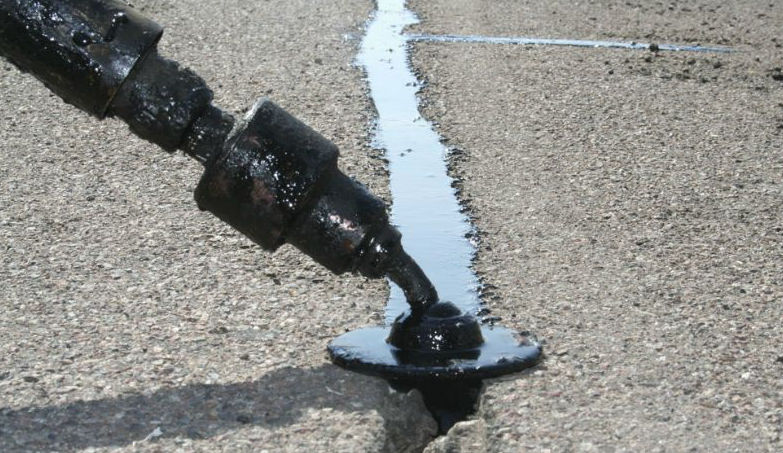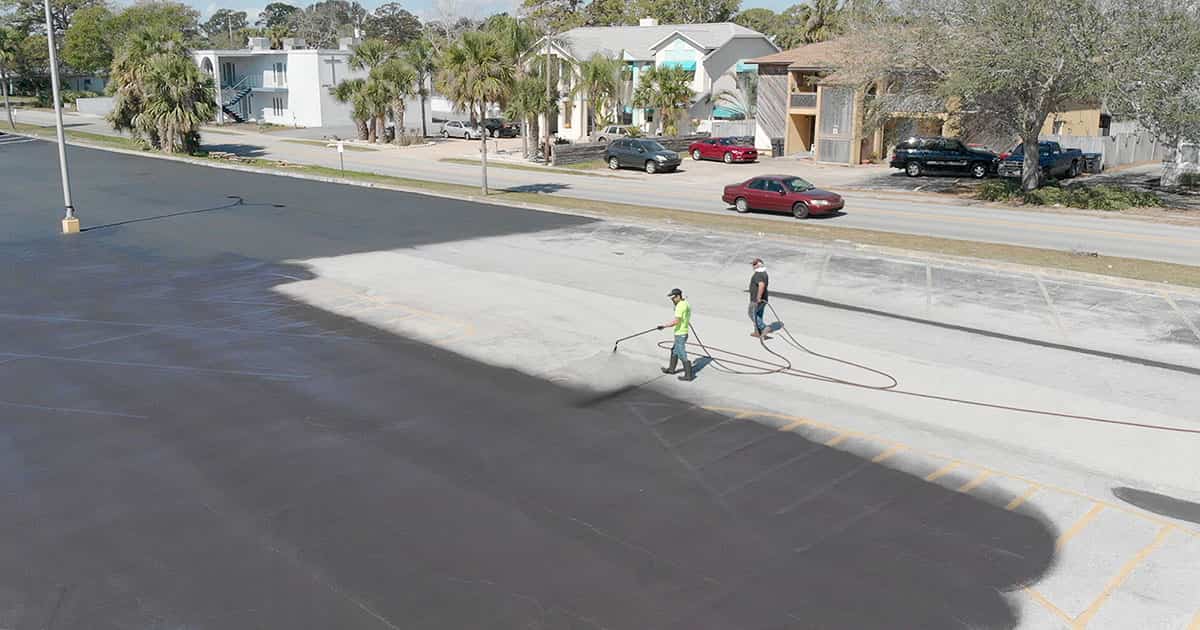Boost Safety and Appeal: Angled Parking Area Solutions with Asphalt Sealing
Boost Safety and Appeal: Angled Parking Area Solutions with Asphalt Sealing
Blog Article
Hot Mix Asphalt: A Lasting Option for Sidewalk
Warm Mix Asphalt (HMA) has actually arised as a leading sustainable selection for pavement solutions, providing a myriad of innovative innovations and ecological benefits. As the demand for environmentally friendly building practices expands, checking out the nuances of HMA's sustainability can provide useful understandings right into the future of pavement services.
Environmental Advantages of Warm Mix Asphalt

In Addition, Hot Mix Asphalt helps to minimize urban warmth island effects. Its dark shade soaks up sunshine, lowering the quantity of heat mirrored back into the atmosphere contrasted to lighter-colored pavements. This can lower ambient temperatures in city locations, lowering the demand for cooling and eventually lowering power intake.
In addition, Hot Mix Asphalt adds to enhanced stormwater administration. Its permeable nature enables water to infiltrate the sidewalk and charge groundwater supplies, decreasing drainage and the threat of flooding. These environmental benefits make Hot Mix Asphalt a sustainable option for paving roads and freeways.
Energy Effectiveness in HMA Manufacturing
Is energy performance a vital consider the production of Hot Mix Asphalt (HMA)? Definitely. Energy plays a considerable role in the manufacturing of HMA, impacting both cost and ecological sustainability. One key aspect of power performance in HMA manufacturing is using warm mix asphalt (WMA) innovations (commercial parking lot paving). WMA permits the blending and positioning of asphalt at lower temperatures compared to typical warm mix asphalt, resulting in lowered power consumption during production. This procedure not only decreases gas usage yet additionally decreases greenhouse gas exhausts, making it an extra eco friendly option.
Moreover, improvements in plant technologies have actually led to more energy-efficient HMA manufacturing processes. By optimizing power usage in HMA manufacturing, the industry can lower its carbon impact while preserving high-grade sidewalk materials.
Recyclability of Hot Mix Asphalt
The recyclability of Hot Mix Asphalt (HMA) is a critical aspect of its sustainability and long-lasting ecological effect. HMA is just one of the most recycled materials in the United States, with over 100 million lots of reclaimed asphalt sidewalk (RAP) being reused every year in brand-new sidewalk construction. Reusing HMA provides a number of ecological benefits, such as minimizing the requirement for virgin materials, lowering energy usage throughout manufacturing, and decreasing the quantity of waste sent to landfills.
The procedure of recycling HMA involves grating the existing sidewalk, squashing it into smaller pieces, and mixing it with new aggregate and asphalt binder to produce a recycled mix. In general, the recyclability of HMA plays a significant function in promoting sustainable methods within the sidewalk sector.

Long-Term Efficiency of HMA
Asphalt sidewalks show durability and resilience over a prolonged period, showing the lasting efficiency of Warm Mix Asphalt (HMA) Furthermore, improvements in HMA technology, such as the usage of polymer-modified binders and cozy my explanation mix asphalt, have further boosted the durability and long life of HMA pavements. By focusing on top quality building and construction and maintenance methods, HMA continues to prove itself as a sustainable and cost-efficient remedy for lasting pavement infrastructure.

HMA: Resilience and Sustainability
Showing both sturdiness and sustainability, Warm Mix Asphalt (HMA) has ended up being a cornerstone in the construction of long-lasting pavement facilities - regrading. HMA's sturdiness comes from its capability to hold up against hefty tons, harsh climate condition, and high web traffic quantities, making it a reliable choice for highways, freeways, and flight terminal paths. The structure of HMA, which typically consists of accumulations, binder, and filler, plays a crucial duty in improving its longevity and resistance to tear and wear
Moreover, HMA's sustainability exists in its recyclability and energy-efficient manufacturing process. The capability to reuse redeemed asphalt sidewalk (RAP) in new HMA combinations lowers the demand for virgin products and decreases the ecological influence of pavement building and construction and maintenance. Furthermore, the energy effectiveness of creating HMA exists in its lower mixing temperature levels compared to other sidewalk materials, leading to lowered energy consumption and greenhouse gas emissions.
Final Thought
In verdict, warm mix asphalt (HMA) offers a sustainable remedy for sidewalk with its eco friendly qualities. HMA's recyclability, power efficiency in production, and long-term longevity make it an environmentally friendly selection for road building.
HMA is one of the most recycled products in the United States, with over 100 million lots of recovered asphalt pavement (RAP) being recycled yearly in new sidewalk building.The process of you can try this out reusing HMA entails grating the existing pavement, crushing it into smaller pieces, and blending it with new aggregate and asphalt binder to produce a recycled mix.Asphalt pavements show sturdiness and strength over an extended period, mirroring the long-lasting performance of Warm Mix Asphalt (HMA) Additionally, advancements in HMA technology, such as the usage of polymer-modified binders and warm mix asphalt, have actually further enhanced the toughness and long life of HMA pavements. The capacity to reuse reclaimed asphalt sidewalk (RAP) in brand-new HMA mixtures see this minimizes the demand for virgin products and reduces the environmental influence of pavement building and upkeep.
Report this page